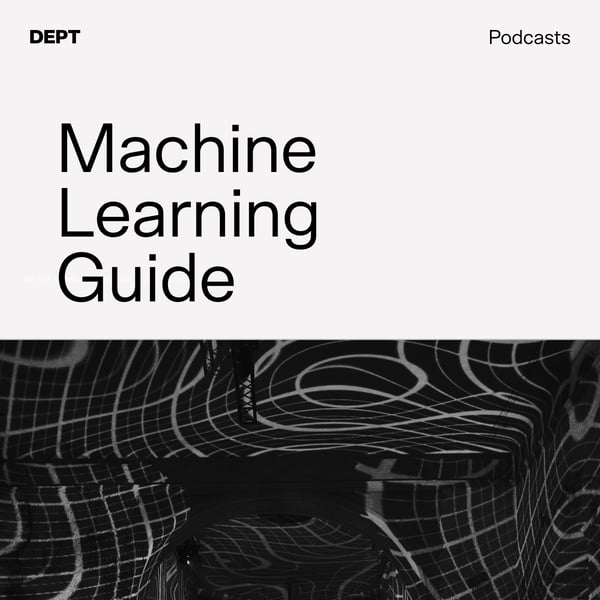MLA 005 Shapes & Sizes
Machine Learning Guide
OCDevel
4.9 • 848 Ratings
🗓️ 9 June 2018
⏱️ 26 minutes
🧾️ Download transcript
Summary
Support my new podcast: Lefnire's Life Hacks
Dimensions, size, and shape of Numpy ndarrays / TensorFlow tensors, and methods for transforming those.
Transcript
Click on a timestamp to play from that location
| 0:00.0 | Welcome back to Machine Learning Guide. I'm your host, Tyler Rinelli. |
| 0:05.0 | MLG teaches the fundamentals of machine learning and artificial intelligence. |
| 0:09.0 | It covers intuition, models, math, languages, frameworks, and more. |
| 0:13.0 | Where your other machine learning resources provide the trees, I provide the forest. |
| 0:18.0 | Visual is the best primary learning modality, but audio is a great supplement during exercise commute and chores. |
| 0:25.6 | Consider MLG your syllabus with highly curated resources for each episode's details at OCdevel.com forward slash MLG. |
| 0:35.6 | I'm also starting a new podcast which could use your support. It's called |
| 0:39.9 | Lefnear's Life Hacks and teaches productivity focused tips and tricks, some which could prove |
| 0:45.5 | beneficial in your machine learning education journey. Find that at Ocdevel.com forward slash |
| 0:51.9 | LLH. You're listening to Machine Learning Applied. In this episode, we're going to talk about |
| 0:57.7 | shapes and sizes of ND arrays and tensors. I personally found shaping to be a very confusing |
| 1:04.4 | concept when I first started doing machine learning. It's something you definitely don't deal with |
| 1:09.0 | outside of machine learning and data science and regular computer programming and web development and the sort. So it took me a while to |
| 1:15.5 | get comfortable with it and it just takes practice. So you'll eventually get it when working in |
| 1:20.3 | machine learning. But I figured I'd do an episode and give you a lay of land. So as a recap on something |
| 1:25.2 | I've mentioned multiple times in MLG, when you're dealing with arrays of multiple dimensions, we call that a tensor. |
| 1:33.2 | So an array like you're used to, a standard array, we call that a 1D tensor, a one-dimensional tensor, or sometimes a vector. |
| 1:43.0 | A two-dimensional array, or 2D tensor, is called a vector. A two-dimensional array or 2D tensor is called a matrix. |
| 1:48.0 | Incidentally, a 0D tensor is called a scalar, which is just a number, like the number 5 or the number 10. |
| 1:57.0 | That's a 0D tensor. So the general term we have for any dimensional array is a tensor |
| 2:05.6 | in mathematics. In NumPi, they call it an n-d array, any dimensional array. And we have names |
| 2:13.6 | for 0d, 1d, and 2D tensors, that is, scalar, vector, and matrix, respectively. |
... |
Please login to see the full transcript.
Disclaimer: The podcast and artwork embedded on this page are from OCDevel, and are the property of its owner and not affiliated with or endorsed by Tapesearch.
Generated transcripts are the property of OCDevel and are distributed freely under the Fair Use doctrine. Transcripts generated by Tapesearch are not guaranteed to be accurate.
Copyright © Tapesearch 2025.

